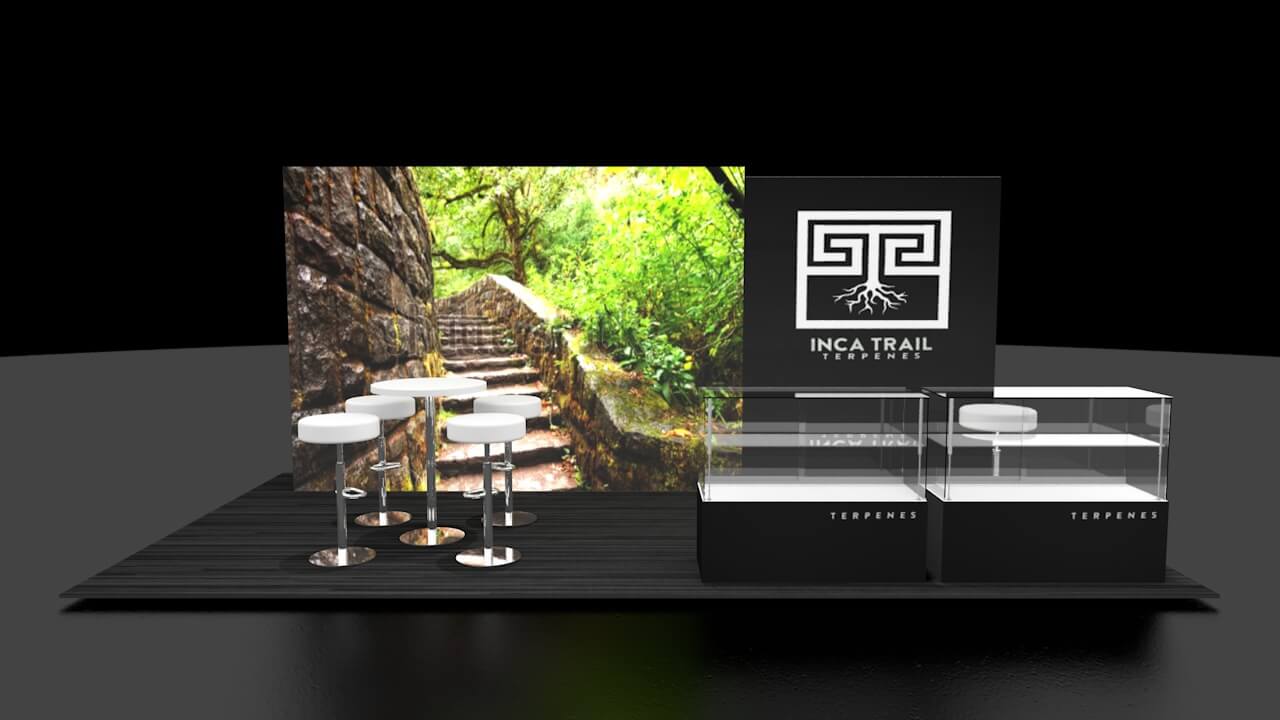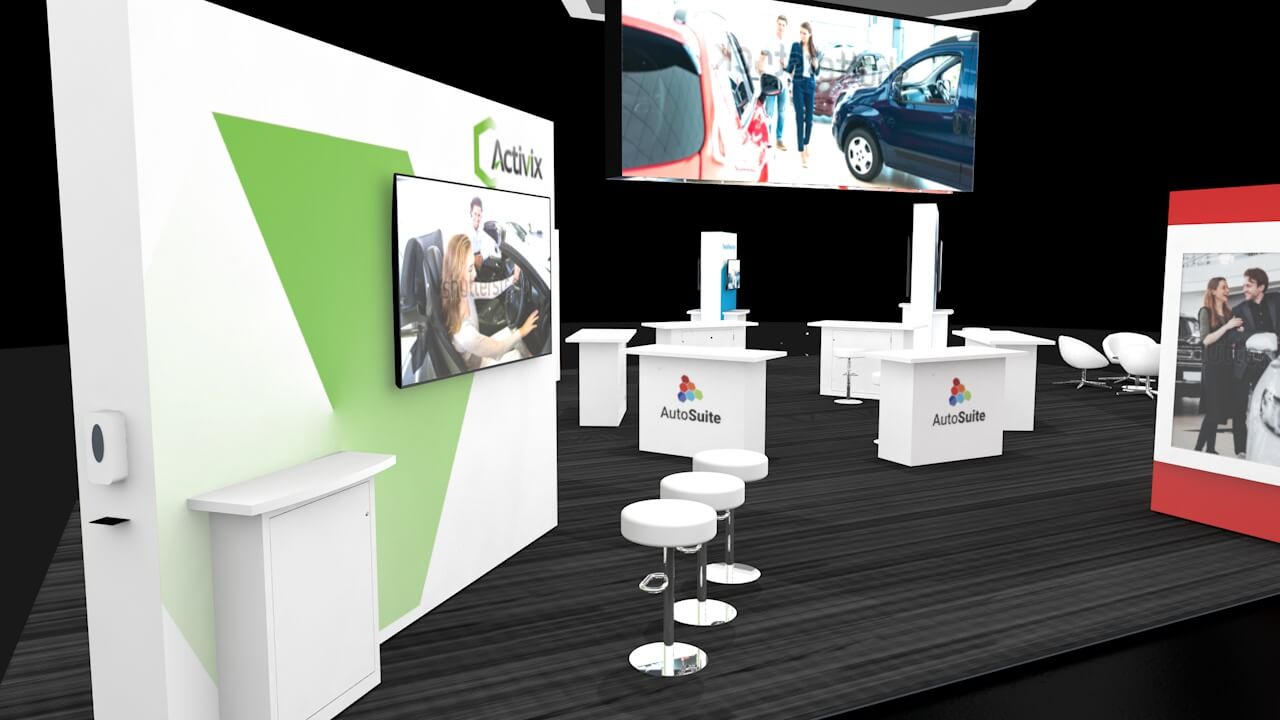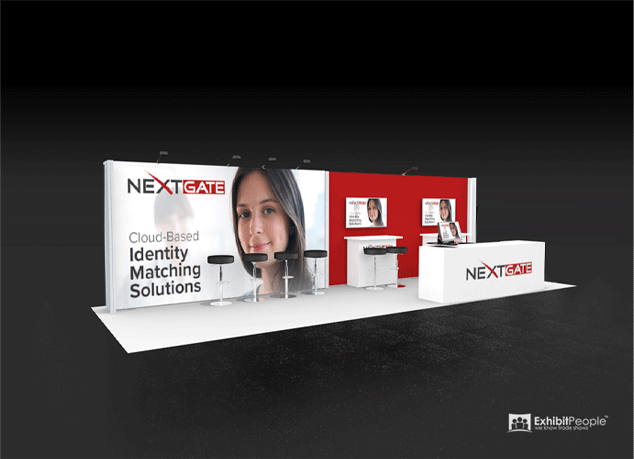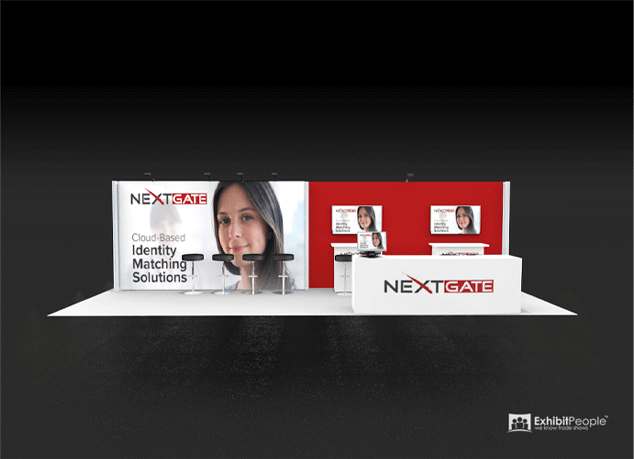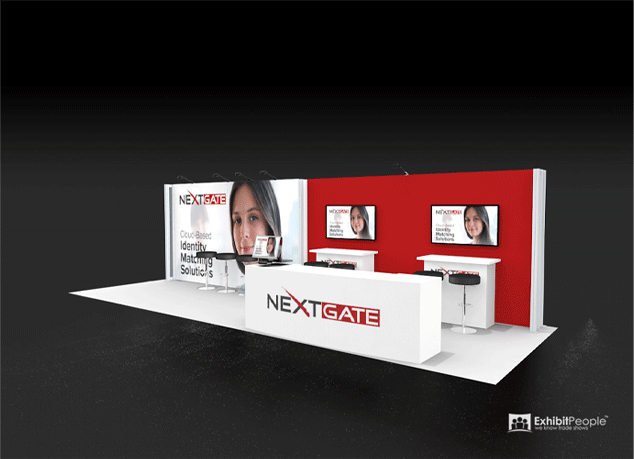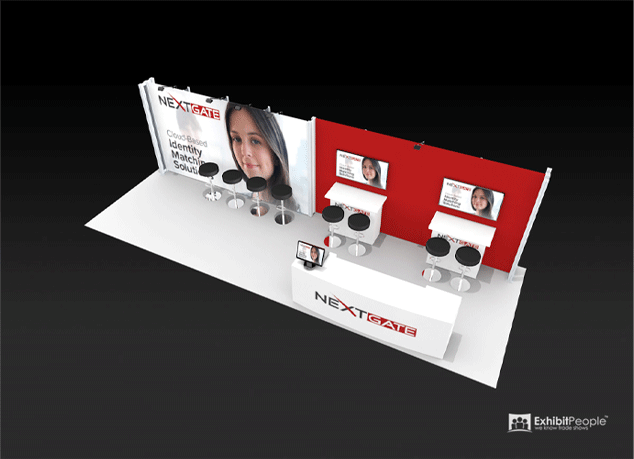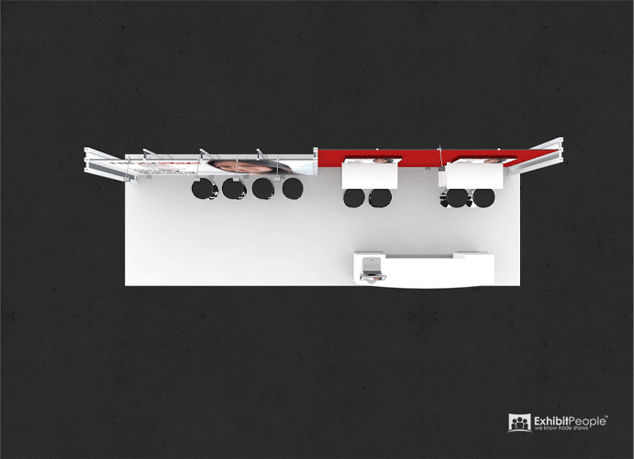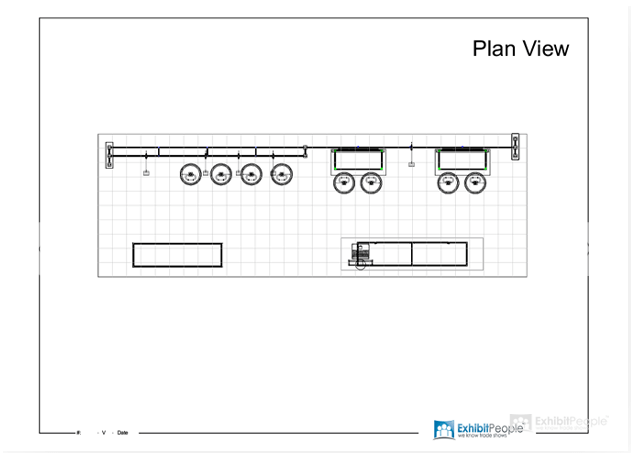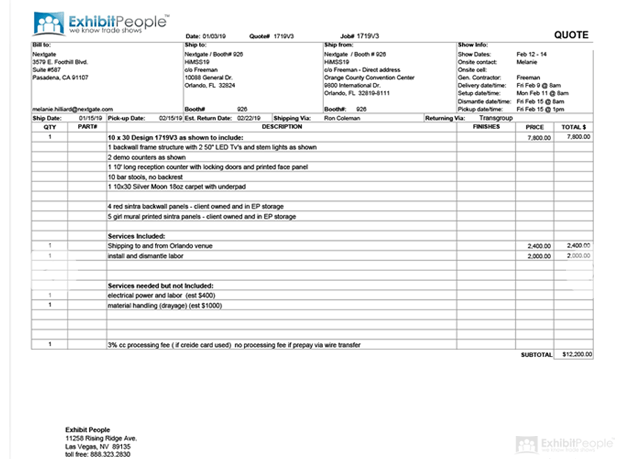LED Video Wall Total Costs
If you’re considering renting an LED Video Wall it’s helpful to also understand the show floor related costs involved when your booth includes an LED Video Wall. You may be quoted a price for only the LED video wall tiles, and video player electronics, but there’s much more to the involved in the total cost of having a LED Video Wall in your trade show booth. If you know more about what required you’ll be able to shop more effectively and budget more accurately.
Whether your video wall is suspended from the ceiling or supported on the ground both will have these show floor costs in common:
The first one you might not think about is the electrical power requirements. Video wall tiles require anywhere from 100 watt to 150 watt depending on the brand and the pixel density resolution.
So for example, if your LED Video Wall is quite large having 100 LED Video Wall tiles your video wall would require 10,000 watts of electrical power just for the tiles. This does not include the additional electrical power required for the laptop and controller and audio system. We typically plan another thousand watts for those items. So in this case, 11000 watts total for this 100 tile LED Video Wall.
Depending on how you order your power you might have additional Electrical costs such as the Electricians may add a “Distribution box.” This is essentially a high powered power strip about the size of a desktop computer. These have one large cord going into it and a number of power out outlets you can plug into on the other side. The show can charge approximately $200 for a distribution box.
Sometimes this distribution box is the best way to go but when possible we prefer to order a number of 1500 watt outlets. This is one way to avoid the cost of a distribution box and the delay caused by requiring the electrician to come over and make the connections in and out of the distribution box.
To put this into perspective – the typical TV only requires about 150 watts and the typical stem light today requires only about 20 watts of power so adding a LED Video Wall to your booth can significantly jump your electrical power needs, and the cost can be a few thousand, rather than a few hundred.
If your video wall is suspended from the ceiling then there’s a cost to run the power from some ceiling location dropped down to your suspended video wall. To get an accurate price for a ceiling electrical draw you need to provide drawings of your booth with the dress and the LED Video Wall for the power drop. This electrical power drop can be anywhere from $500-$1000.
For a suspended video walls, you will also need a CAT5 data cable drop. Typically suspend the video walls get their content from a controller and laptop located somewhere on the ground level in the booth space, maybe inside a tower or a closet.
It could be the rigging team or the electricians that run your data cable, and their charge will be based on the cost for the crew and the amount of time it takes them to place your data cable. The typical rigging crew runs approximately $800 an hour so if your data cable is running a long distance it’s realistic that the cost for positioning your data cable could be $500-$1000.
So you see that power requirements is it important part of a LED video wall and your budget for your LED video wall.
One last electrical requirement to be aware of. We find out a number of shows layer on the requirement to either; order “24 hour power” or to pay a certain amount for Stagehands to turn on and off your LED Video Wall each day of the event.
Unless your video wall is very large, we find it’s best to order the 24 hour electrical service. For example if your video wall required $900 of standard electrical power then the typical fee for 24 hours power is double that amount, or $1800 in this case.
Next, let’s take a look at the union labor required to build your video wall before the show and dismantle your video while after the show:
In cities where unions are strong such as San Francisco, Chicago and Las Vegas, you will be required to order Stagehands to do this work. We find it currently many of these venues have a policy to require to stagehands for a minimum of four hours. A typical hourly rate would be $150 per hour for standard time and $225 per hour for evenings and weekends.
If you do the math, you can see that this is also another significant cost related to including a LED Video Wall on your booth. If for example your booth dismantles on a Saturday the bill would come to $1800 for the two Stagehands has four hour minimum each.
It’s good to talk with your Exhibit House about the city and venue where are your show is taking place because for example Orlando is very relaxed on union labor requirements. So this additional $2500 for Stagehands you would pay in Las Vegas for example you could avoid entirely if your show was being held in Orlando Florida.
If your video wall will be suspended from the ceiling we should look at rigging related costs:
All suspended video walls require truss and motorized hoists.
The Rigging crew hast to determine where is the motors can be placed overhead to support your LED Video Wall. This can require more truss to go further distance than anticipated. Often this is not fully known until install day when looking up from the booth space.
Once motors and truss are in place, the truss is lowered and a Stagehands can begin attaching the LED Video Wall tiles to the video wall hang bar.
Every few rows the rigging crew will raise the video wall and eventually the last row is locked in place. The Rigging crew stands by while the electricians and stage hands make the data and electrical connections so the wall can be tested before it’s raised.
When ready the video wall is raised up to its final position.
So you see that suspending an LED Video Wall includes union Rigging people, Stagehands and Electricians – all are billed at different hourly rates for standard and overtime work.
In general, we find that a smaller LED Video Walls with all of the above included will have a rigging cost of around $5000 whereas a larger LED Video Walls will require more of everything and have a cost of closer to $10,000. These are the cost just to get your video wall overhead. However, with your video while overhead it gives you better show for disability and more options for an open inviting booth space. Not all Rigging requires truss, it depends on weight and available hang points.
The last trade show floor related costs related to LED video walls would be Material Handling:
Your LED Video Wall is heavy. If you consider the weight assigned to each LED video wall tile and it’s portion of the shipping AV case you’re looking at about 35 pounds per tile. An LED video wall with 100 tiles probably will weigh close to 3500 pounds.
If the show charges $1.50 a pound for Material Handling, then we would be looking at a Material Handling cost of $5200.
So Electrical costs and stagehand related costs, and Material Handling related costs are significant factors that in most cases well I’m out to the majority of your video wall expense.
There’s no question about the ability to deliver a high impact message a LED video Wall provides. Even with these significant show for costs LED Video Walls continue to become more common on the show floor because they outperform any other printed or architectural element intended to draw attention.
Over time, LED Video Walls will become cheaper, lighter and more common and General Contractors (Freeman, GES ) will be forced to relax the install and dismantle requirements. However right now the extra cost to have a commanding presence is worth it for many exhibitors.
If you’re considering considering adding an LED Video Wall above or into your booth design give us a call here at Exhibit People.
We’d be happy to brainstorm how to best accomplish this with a minimal cost and maximum impact. Browse priced LED Video Wall kits and LED Video Wall design ideas and let us know what catches your eye.
Related link: 5 Industry Trends to Watch in 2021
Related link: LED Wall Kit Ideas
